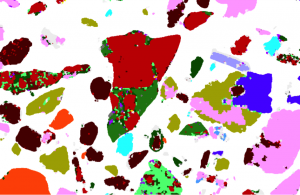
Automated mineralogy has been used to quantitatively determine the contaminant partitioning in the soil particulates originating from heavily polluted mining/smelting sites. This method provides faster data acquisition, the full integration of the quantitative EDS data and better detection limits for the elements of interest. AutoSEM was found to be a useful tool for the determination of the modal phase distribution and element partitioning in the metal(loid)-bearing (As, Cu, Pb, Zn) soil particulates and will definitely find more applications in environmental soil sciences in the future.
Tuhý M., Hrstka T., Ettler V., Automated mineralogy for quantification and partitioning of metal(loid)s in particulates from mining/smelting-polluted soils. Environmental Pollution 266: 115118. (DOI) (open-access)






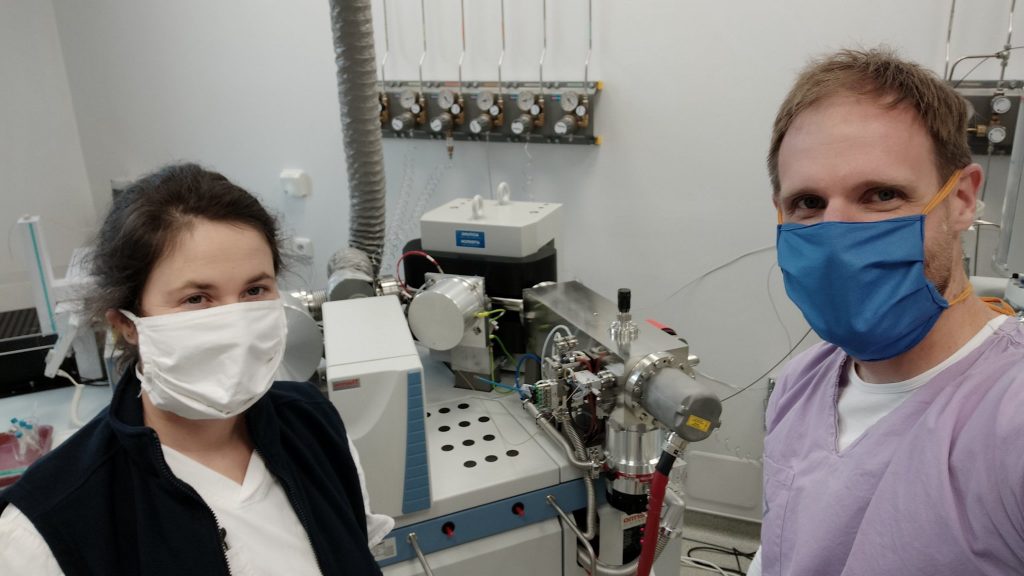
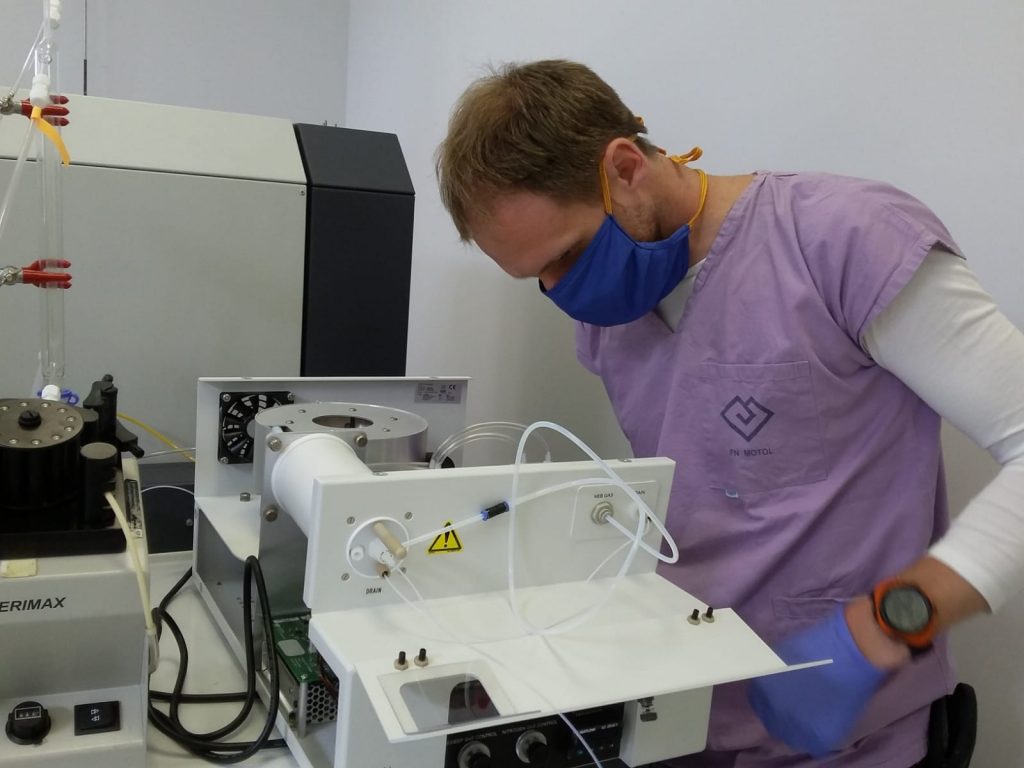
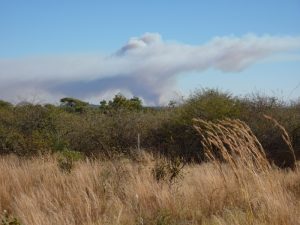 Mercury distribution in topsoils and vegetation samples and temperature-dependent Hg mobilization simulating wildfires have been investigated near a Cu smelter in semi-arid Namibia. The thermo-desorption experiments performed on the representative Hg-rich topsoils indicated that >91% of the Hg was released at ~340°C, which corresponds to the predominant grassland-fire conditions. Despite the installation of a sulfuric acid plant in the smelter in 2015 and a calculated drop in the estimated Hg emissions (from 1301 ± 457 kg/y for the period 2004-2015 to 67 ± 5 kg/y after 2015), the Hg legacy pool in the smelter surroundings will contribute to wildfire-driven Hg emissions until its complete burn-out. Using the Hg spatial distribution data in the area (184 km2), the estimates indicate that up to 303 kg and 1.3 kg can be remobilized from the topsoils and vegetation, respectively.
Mercury distribution in topsoils and vegetation samples and temperature-dependent Hg mobilization simulating wildfires have been investigated near a Cu smelter in semi-arid Namibia. The thermo-desorption experiments performed on the representative Hg-rich topsoils indicated that >91% of the Hg was released at ~340°C, which corresponds to the predominant grassland-fire conditions. Despite the installation of a sulfuric acid plant in the smelter in 2015 and a calculated drop in the estimated Hg emissions (from 1301 ± 457 kg/y for the period 2004-2015 to 67 ± 5 kg/y after 2015), the Hg legacy pool in the smelter surroundings will contribute to wildfire-driven Hg emissions until its complete burn-out. Using the Hg spatial distribution data in the area (184 km2), the estimates indicate that up to 303 kg and 1.3 kg can be remobilized from the topsoils and vegetation, respectively. Karen Hudson-Edwards, Professor in Sustainable Mining at University of Exeter (UK), will give a lecture entitled „Environmental Minerals: Bacteria, Worms, Dusts, Toxins and the Human Body“ on Monday 13th January 2020 at 3 pm in Ložiskové sbírky (room no. 120, Albertov 6 building, Faculty of Science, Charles University). The lecture takes part of the European Association of Geochemistry Lecture Tour and is partly supported by Center for Geosphere Dynamics. You are cordially invited!
Karen Hudson-Edwards, Professor in Sustainable Mining at University of Exeter (UK), will give a lecture entitled „Environmental Minerals: Bacteria, Worms, Dusts, Toxins and the Human Body“ on Monday 13th January 2020 at 3 pm in Ložiskové sbírky (room no. 120, Albertov 6 building, Faculty of Science, Charles University). The lecture takes part of the European Association of Geochemistry Lecture Tour and is partly supported by Center for Geosphere Dynamics. You are cordially invited!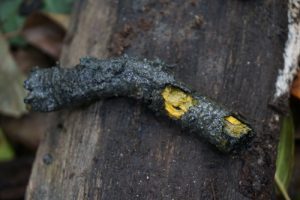 This study investigated As-enriched wetland at the Smolotely-Líšnice Au district (Centra Bohemia) using the combination of geochemical (soil and pore water analyses, S isotopes), mineralogical (microprobe, Raman spectrometry) and biological (DNA extraction) method. In this paper, Magda and her co-authors identified a complex assemblage of As and Fe sulfides (realgar, bonazziite, pyrite, greigite) on the fragments of natural organic matter, which play an active role (very fast microbial sulfate reduction vs. slow transfer of solutes) in arsenic immobilization in polluted wetland systems.
This study investigated As-enriched wetland at the Smolotely-Líšnice Au district (Centra Bohemia) using the combination of geochemical (soil and pore water analyses, S isotopes), mineralogical (microprobe, Raman spectrometry) and biological (DNA extraction) method. In this paper, Magda and her co-authors identified a complex assemblage of As and Fe sulfides (realgar, bonazziite, pyrite, greigite) on the fragments of natural organic matter, which play an active role (very fast microbial sulfate reduction vs. slow transfer of solutes) in arsenic immobilization in polluted wetland systems.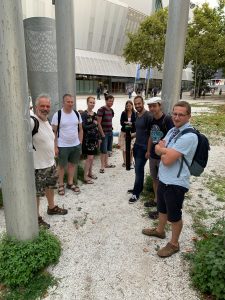 We attended Goldschmidt 2019 conference in Barcelona, Spain. It was a week full of exciting geochemistry!
We attended Goldschmidt 2019 conference in Barcelona, Spain. It was a week full of exciting geochemistry! We combined elemental and isotopic studies, leaching techniques and speciation modeling to describe Cu and Pb behavior in contaminated soil profiles of Kombat, Namibia. Tailings, soils and bedrock samples were analyzed. We described pollutants’ behavior in detail for different type of soils and concluded that migration is highly dependent on soil characteristics and element speciation shown by variations, or lack thereof, in concentrations, δ65Cu and 206Pb/207Pb values with depth.
We combined elemental and isotopic studies, leaching techniques and speciation modeling to describe Cu and Pb behavior in contaminated soil profiles of Kombat, Namibia. Tailings, soils and bedrock samples were analyzed. We described pollutants’ behavior in detail for different type of soils and concluded that migration is highly dependent on soil characteristics and element speciation shown by variations, or lack thereof, in concentrations, δ65Cu and 206Pb/207Pb values with depth. We used a multi-method approach for characterization of dust from mines and smelters in the northern Namibia. In vitro bioaccessibility testing in simulated gastric fluid (SGF) indicated that As, Pb (and also Cd to a lesser extent) exceeded tolerable daily intake limits for these contaminants in the case of slags and smelter dusts, but the exposure risk for local population is only important at the unfenced disposal sites.
We used a multi-method approach for characterization of dust from mines and smelters in the northern Namibia. In vitro bioaccessibility testing in simulated gastric fluid (SGF) indicated that As, Pb (and also Cd to a lesser extent) exceeded tolerable daily intake limits for these contaminants in the case of slags and smelter dusts, but the exposure risk for local population is only important at the unfenced disposal sites.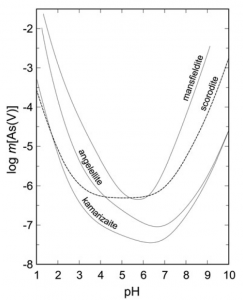 A complete set of new thermodynamic data has been determined for three Al and Fe arsenate minerals: mansfieldite, angelellite and kamarizaite.
A complete set of new thermodynamic data has been determined for three Al and Fe arsenate minerals: mansfieldite, angelellite and kamarizaite. In 2018, Zdeněk Johan Award was awarded to Petr Drahota for his paper: Drahota et al. (2017) Biologically induced formation of realgar deposits in soil, Geochimica et Cosmochimica Acta 218, 237–256. Congratulations!
In 2018, Zdeněk Johan Award was awarded to Petr Drahota for his paper: Drahota et al. (2017) Biologically induced formation of realgar deposits in soil, Geochimica et Cosmochimica Acta 218, 237–256. Congratulations!